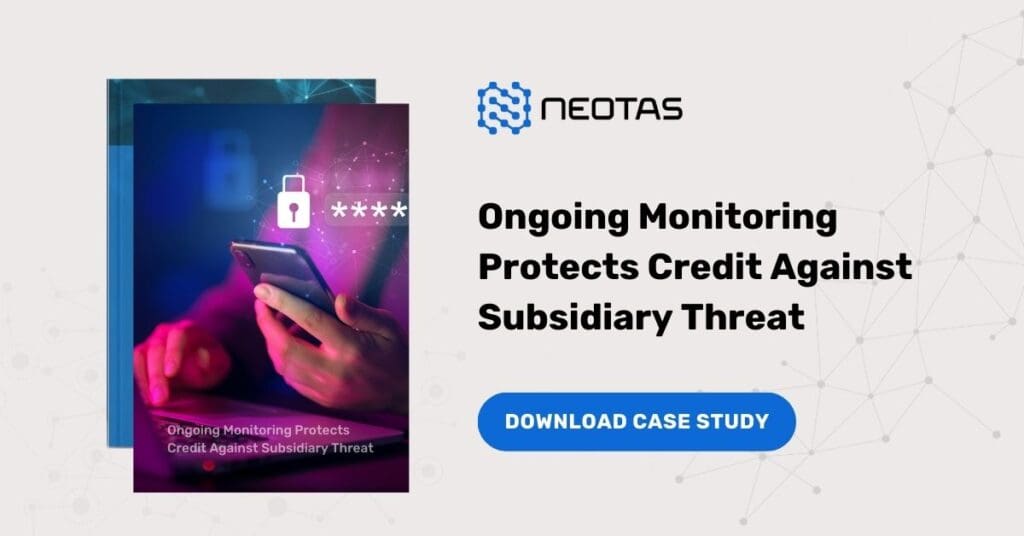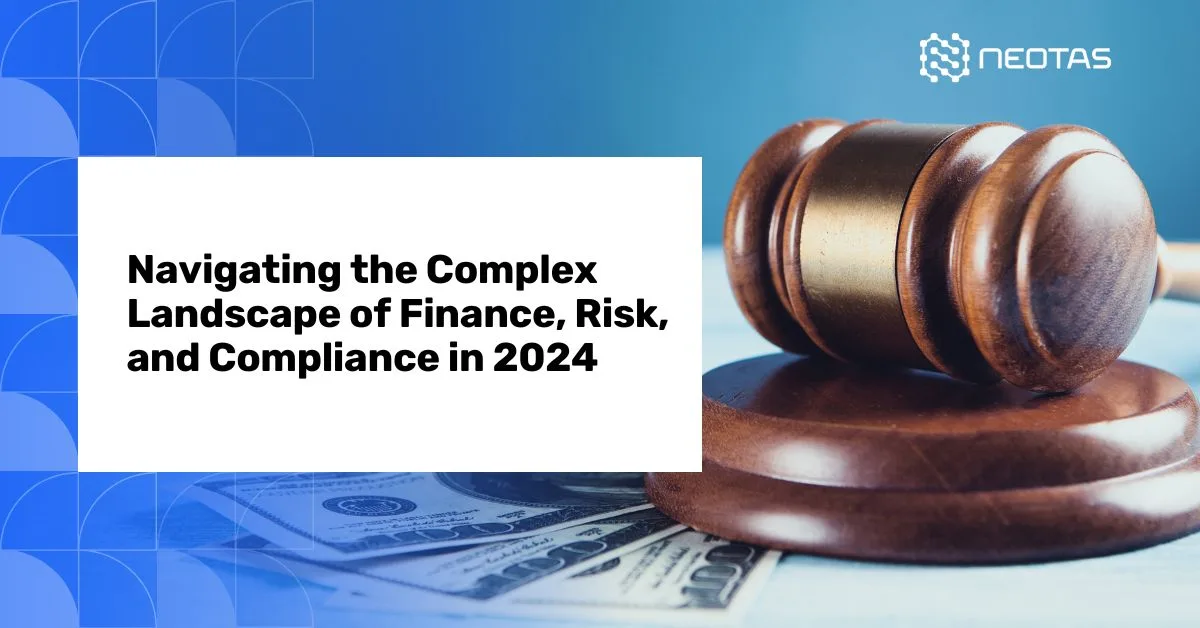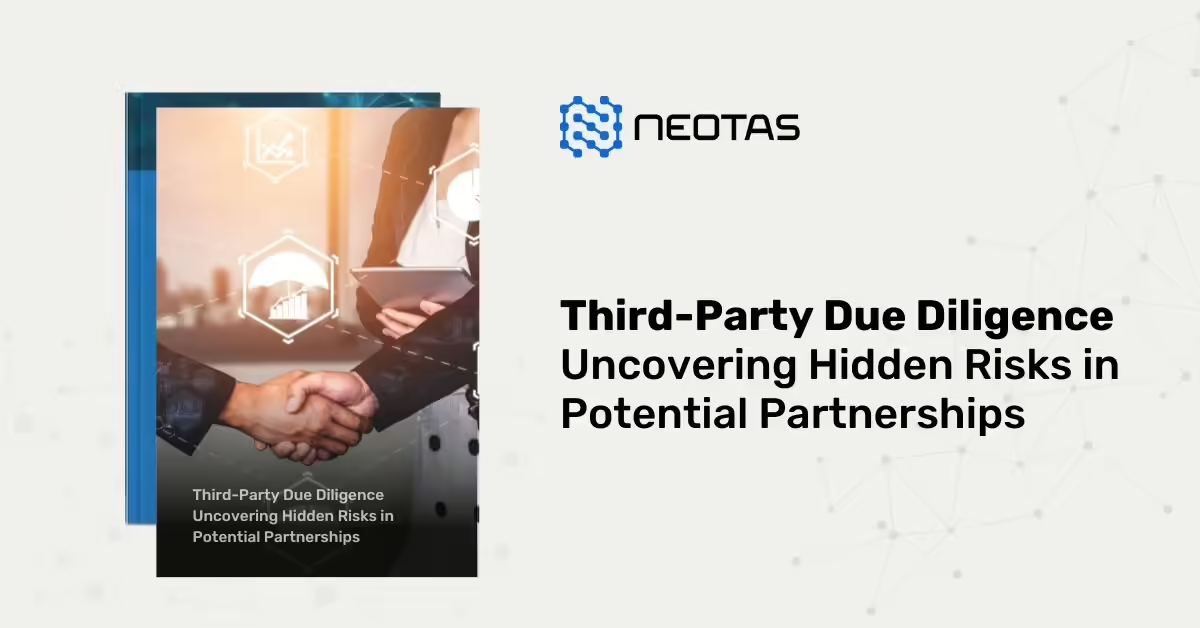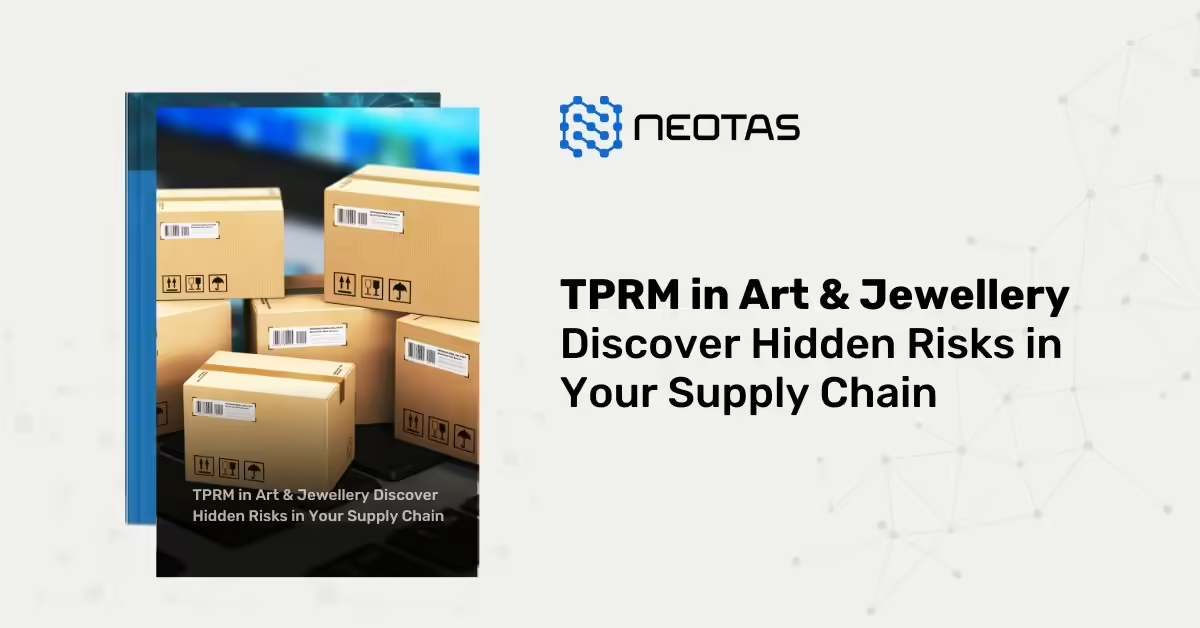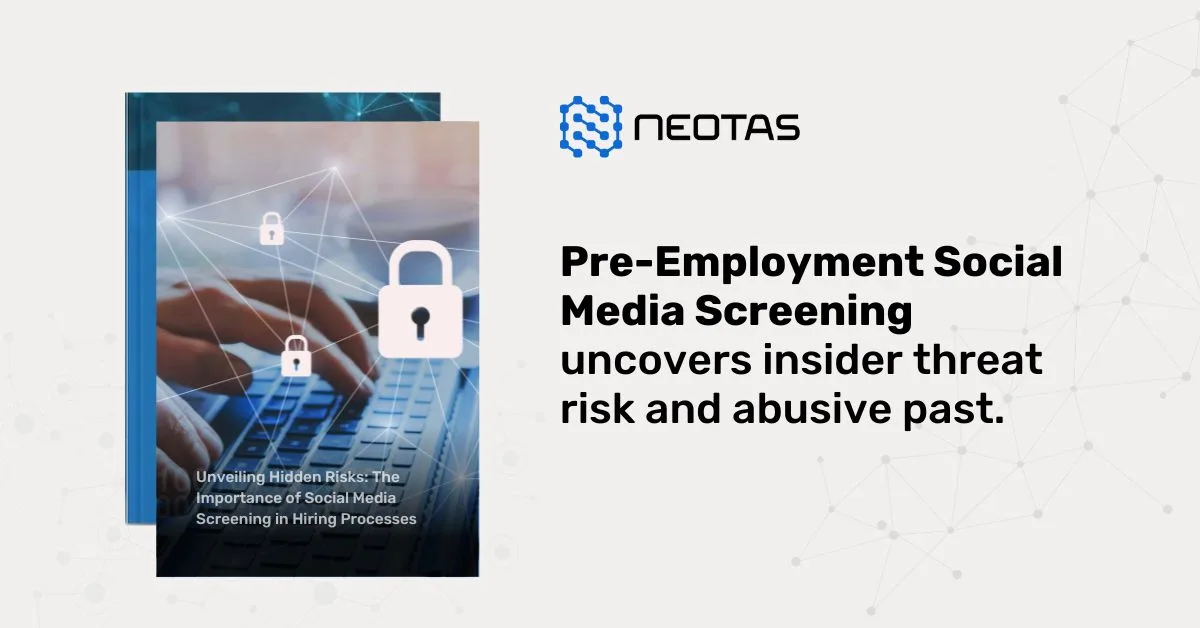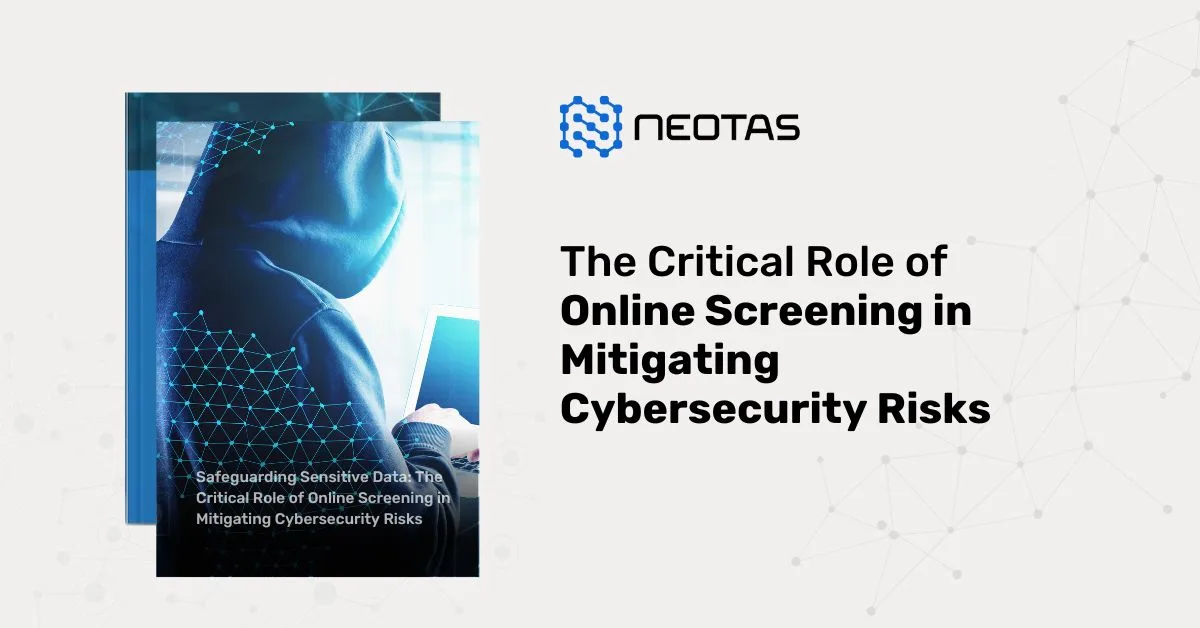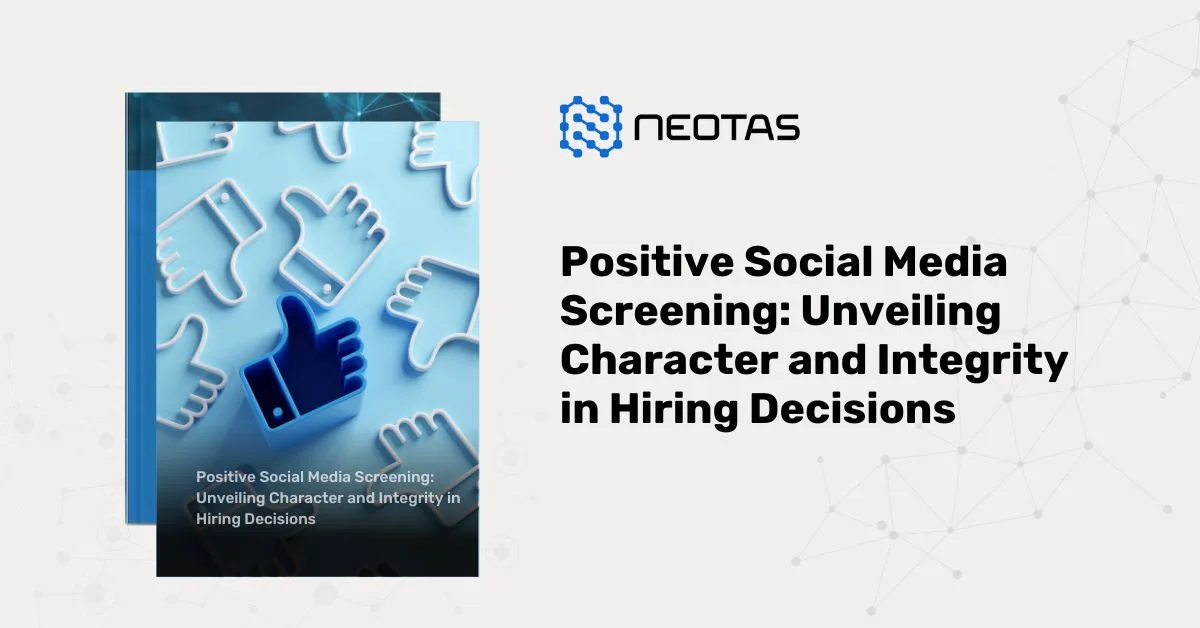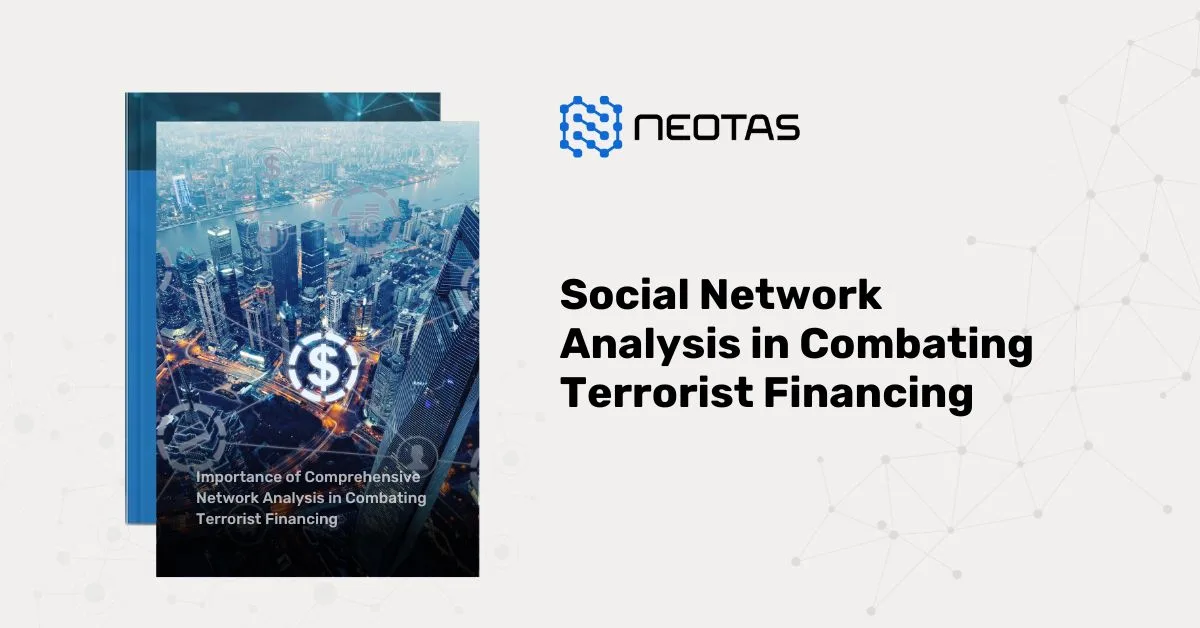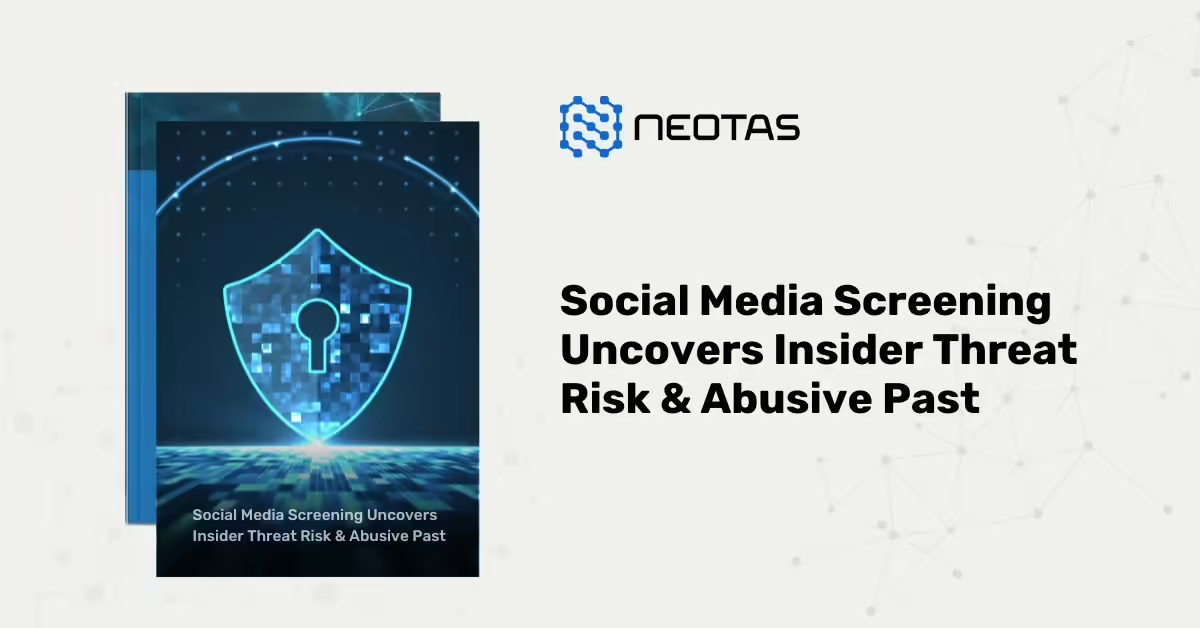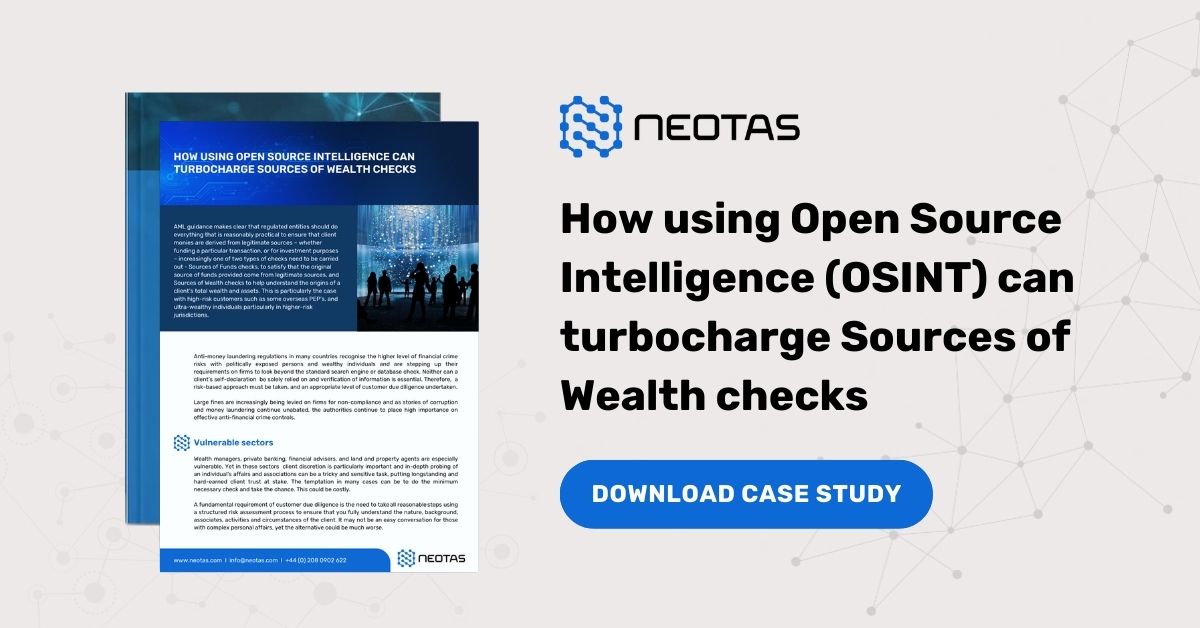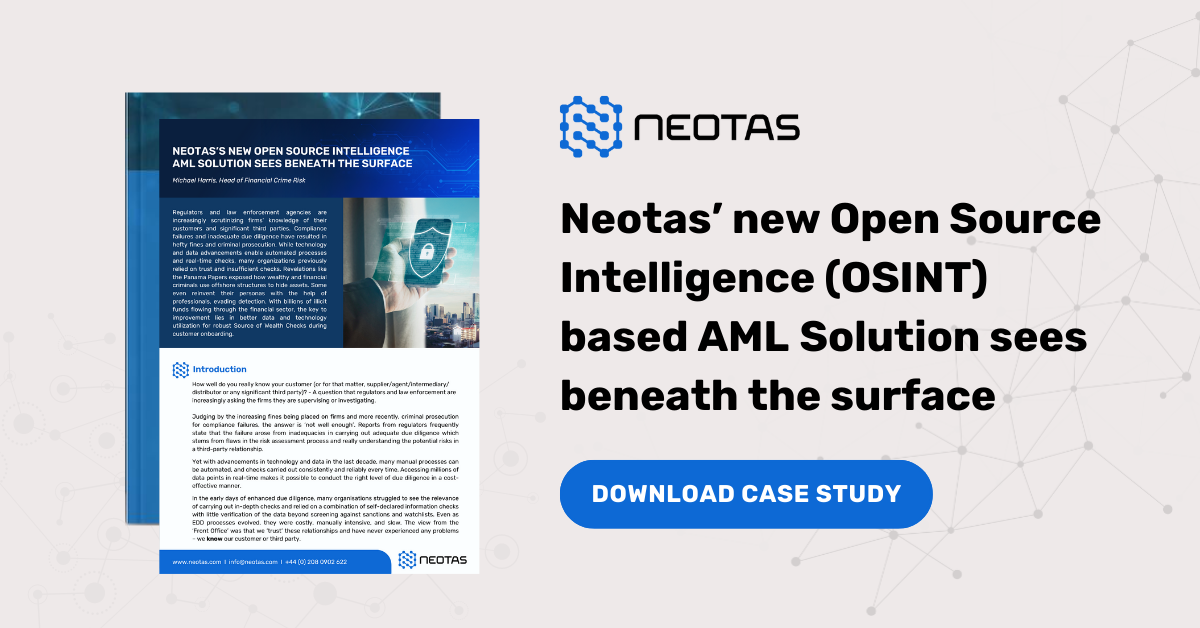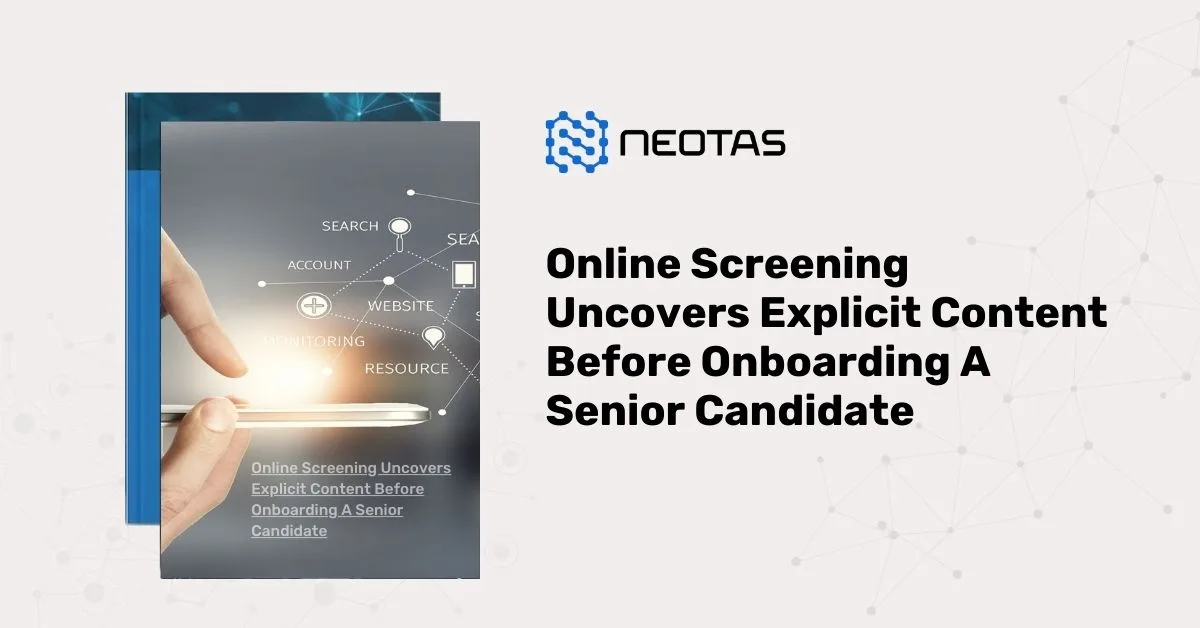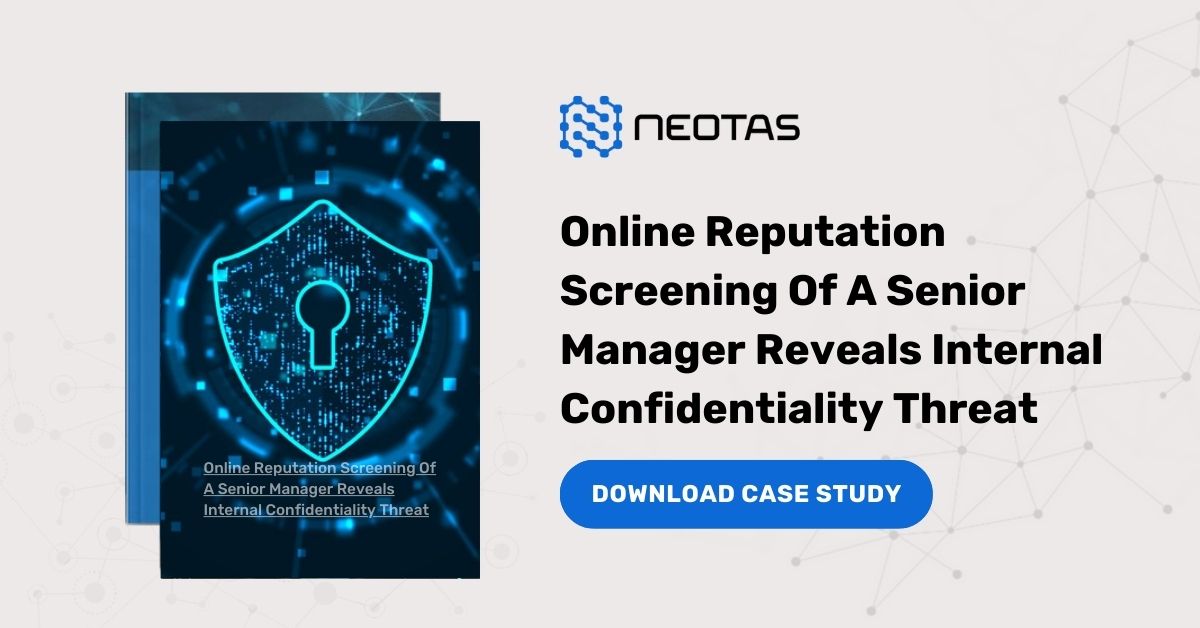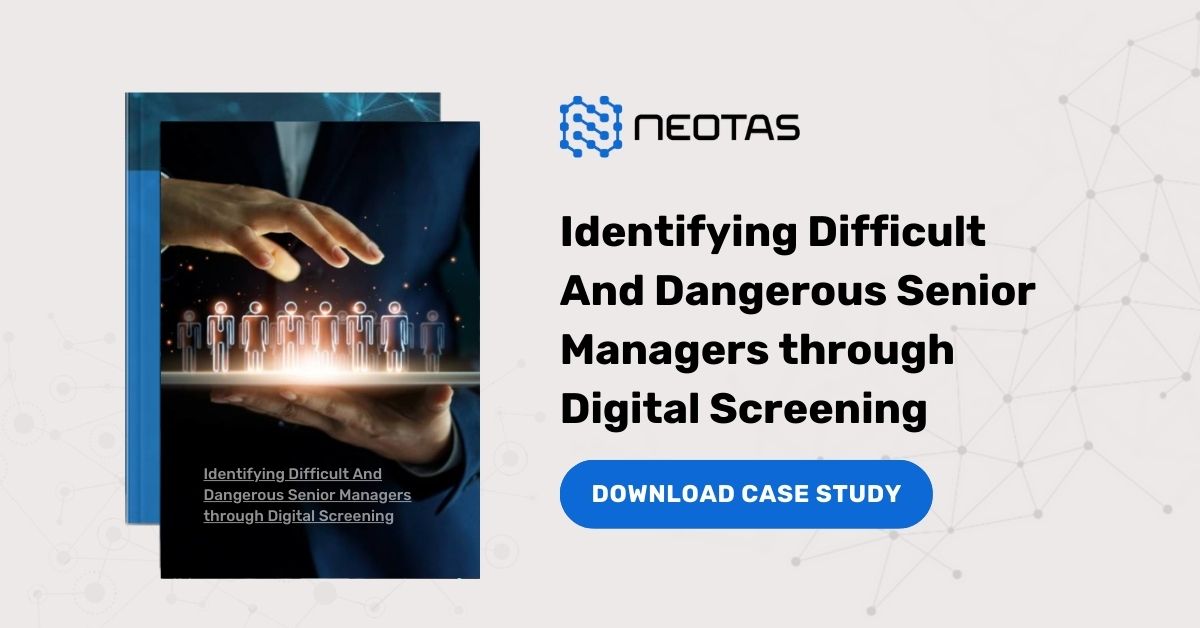Ongoing Monitoring: Safeguarding Credit with Unveiled Subsidiary Threats
Our analysis uncovered and confirmed political links and undisclosed associations for the company’s senior personnel.
- Trade finance client used ongoing monitoring service to identify potential credit risks
- Monitoring the subsidiary’s online footprint, we identified an undisclosed threat to our client’s interests
Download the Case Study on protecting credit and mitigating risks with Ongoing Monitoring
In the world of trade finance, protecting credit and mitigating risks are of paramount importance. At Neotas, our Ongoing Monitoring services play a critical role in safeguarding our clients’ interests. A recent case exemplifies how our continuous monitoring efforts helped a trade finance client identify and address potential credit risks related to a subsidiary.
During our comprehensive analysis, we discovered significant political links and undisclosed associations among the company’s senior personnel. While the client had performed initial due diligence, our Ongoing Monitoring service proved instrumental in keeping a vigilant eye on any emerging threats.
By continuously monitoring the subsidiary’s online footprint and relevant data sources, we detected an undisclosed threat that could have jeopardized our client’s credit. Our timely intervention enabled the trade finance client to take appropriate actions, mitigating potential risks and safeguarding their credit standing.
At Neotas, our approach to Ongoing Monitoring is rooted in cutting-edge technology and meticulous data analysis. We understand that the business landscape is constantly evolving, and risks may emerge or transform over time. As such, our continuous monitoring service provides clients with real-time insights, empowering them to make informed decisions and stay ahead of potential threats.
Whether it’s scrutinizing undisclosed associations, monitoring reputational risks, or detecting financial irregularities, our Ongoing Monitoring service ensures that our clients remain protected throughout their business relationships. With an unwavering commitment to transparency, accuracy, and client satisfaction, we continue to be a trusted partner in fortifying credit and mitigating risks in the ever-changing landscape of trade finance.
FAQs on Ongoing Monitoring
What is Ongoing Monitoring, and why is it important in trade finance?
Ongoing Monitoring is a continuous process of scrutinizing and updating information to identify emerging risks and potential threats, ensuring proactive risk management and credit protection for trade finance clients.
How does Ongoing Monitoring differ from initial due diligence?
Initial due diligence provides a snapshot of risks at a specific time, while Ongoing Monitoring ensures that businesses are aware of any evolving risks or changes that may impact their credit and reputation.
What data sources are utilized in Ongoing Monitoring services?
Ongoing Monitoring services utilize a combination of online sources, public records, social media platforms, financial databases, and other relevant data repositories.
What types of credit risks can Ongoing Monitoring help identify?
Ongoing Monitoring can help identify risks related to undisclosed associations, reputational risks, political affiliations, financial irregularities, and regulatory changes that may impact trade finance credit.
How frequently should Ongoing Monitoring be conducted?
The frequency of Ongoing Monitoring depends on the specific needs of the trade finance client and the dynamic nature of their business relationships. Regular monitoring intervals, such as quarterly or annually, are common.
What are the benefits of outsourcing Ongoing Monitoring services?
Outsourcing Ongoing Monitoring services to specialized firms like ours allows trade finance clients to access advanced technologies, industry expertise, and real-time insights without diverting internal resources.
Can Ongoing Monitoring services be customized for specific risks?
Yes, Ongoing Monitoring services can be tailored to address specific credit risks and compliance requirements based on the trade finance client’s unique needs and risk appetite.
How does Ongoing Monitoring contribute to regulatory compliance in trade finance?
Ongoing Monitoring helps trade finance clients stay compliant with ever-changing regulations and identify potential risks that may impact their credit standing.
Is Ongoing Monitoring a one-time service or an ongoing process?
Ongoing Monitoring is a continuous process, as risks and threats may evolve over time. It involves ongoing data analysis and periodic assessments to ensure timely risk detection.
How can businesses benefit from incorporating Ongoing Monitoring into their risk management strategies?
Incorporating Ongoing Monitoring into risk management strategies ensures proactive identification of emerging risks, enabling businesses to protect their credit and make well-informed decisions in the trade finance landscape.

